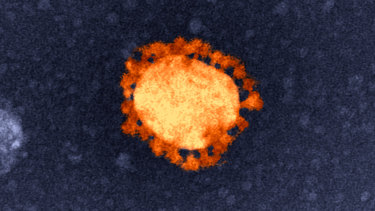Where is COVID-19 Found?
How Long do Coronaviruses Live & Where?
Not much is known about COVID-19 yet, but there are at least 22 studies about where other viruses can survive and where. Human coronaviruses, such as SARS and MERS, can persist on surfaces – including metal, glass or plastic – for as long as nine days if that surface had not been disinfected, according to The Journal of Hospital Infection (03/20).

High humidity and cooler temperatures increase the lifespan of viruses. On average coronaviruses live on surfaces for four to five days, depending on the material (wood, paper, glass or plastic). How to disinfect and even make your own disinfectants and hand sanitizer is covered in a later section of this website.
What about COVID-19?
The New England Journal of Medicine (NEJM) reported that COVID-19 can survive on hard surfaces like stainless steel and plastic for up to three days (72 hours) and one day on cardboard. Estimates based on other coronaviruses had guessed at a few hours to a few days, but now we have a better “ball park” estimate. Ultraviolet light is a powerful disinfectant, and its survivability will be shortened on surfaces exposed to sunlight. Keep in mind that many windows and windshields block UVA, so we are talking about direct sunlight here. Don’t use ultraviolet light on your hands as the radiation is irritating and possibly harmful.
Research with other viruses suggests that its life on rough surfaces and cloth may be shorter. Food is of little risk, since the virus enters the body through the respiratory (through the eyes, nose and mouth areas) not through the digestive system. So it is important to clean utensils, glassware and plates as well as the packaging food comes in to avoid getting it on your hands and then transferring it to your face. So, once again, disinfect surfaces and wash your hands!
Disinfecting
Please go to the next section for information about disinfecting surfaces and cleaning regarding how to kill all coronaviruses. Don’t forget your cell phone!
Good Habits to Develop
Oddly, it’s not so much avoiding people that works to protect yourself. Keeping six feet away usually solves that problem. Rather, it’s how you interact with things like door knobs and then touch your face that most likely leads to infection. What you touch can be transferred when you touch your eyes and other mucous membranes, which is how we typically acquire respiratory infections. Yes, washing your hands is very important. But, sanitizing surfaces you are likely to come in contact before and after you wash is also critical to avoid giving/getting the virus.
Coronaviruses can live on hard surfaces for hours to days. We’re still learning about COVID-19, but we can assume it will live on surfaces for two–20 hours, so keep sanitizer wipes (which are hard to get just now) in the car to wipe down door handles, the steering wheel, shift knob, etc. We’ll talk about common household cleaners and even how you can make your own hand sanitizer in the next section.
What about COVID-19?
The New England Journal of Medicine (NEJM) reported that COVID-19 can survive on hard surfaces like stainless steel and plastic for up to three days (72 hours) and one day on cardboard. Estimates based on other coronaviruses had guessed at a few hours to a few days, but now we have a better “ball park” estimate. Ultraviolet light is a powerful disinfectant, and its survivability will be shortened on surfaces exposed to sunlight. Keep in mind that many windows and windshields block UVA, so we are talking about direct sunlight here. Don’t use ultraviolet light on your hands as the radiation is irritating and possibly harmful.
Research with other viruses suggests that its life on rough surfaces and cloth may be shorter. Food is of little risk, since the virus enters the body through the respiratory (through the eyes, nose and mouth areas) not through the digestive system. So it is important to clean utensils, glassware and plates as well as the packaging food comes in to avoid getting it on your hands and then transferring it to your face. So, once again, disinfect surfaces and wash your hands!
Disinfecting
Please go to the next section for information about disinfecting surfaces and cleaning regarding how to kill all coronaviruses. Don’t forget your cell phone!
Good Habits to Develop
Oddly, it’s not so much avoiding people that works to protect yourself. Keeping six feet away usually solves that problem. Rather, it’s how you interact with things like door knobs and then touch your face that most likely leads to infection. What you touch can be transferred when you touch your eyes and other mucous membranes, which is how we typically acquire respiratory infections. Yes, washing your hands is very important. But, sanitizing surfaces you are likely to come in contact before and after you wash is also critical to avoid giving/getting the virus.
Coronaviruses can live on hard surfaces for hours to days. We’re still learning about COVID-19, but we can assume it will live on surfaces for two–20 hours, so keep sanitizer wipes (which are hard to get just now) in the car to wipe down door handles, the steering wheel, shift knob, etc. We’ll talk about common household cleaners and even how you can make your own hand sanitizer in the next section.
<– Previous Page ––– Next Page –>